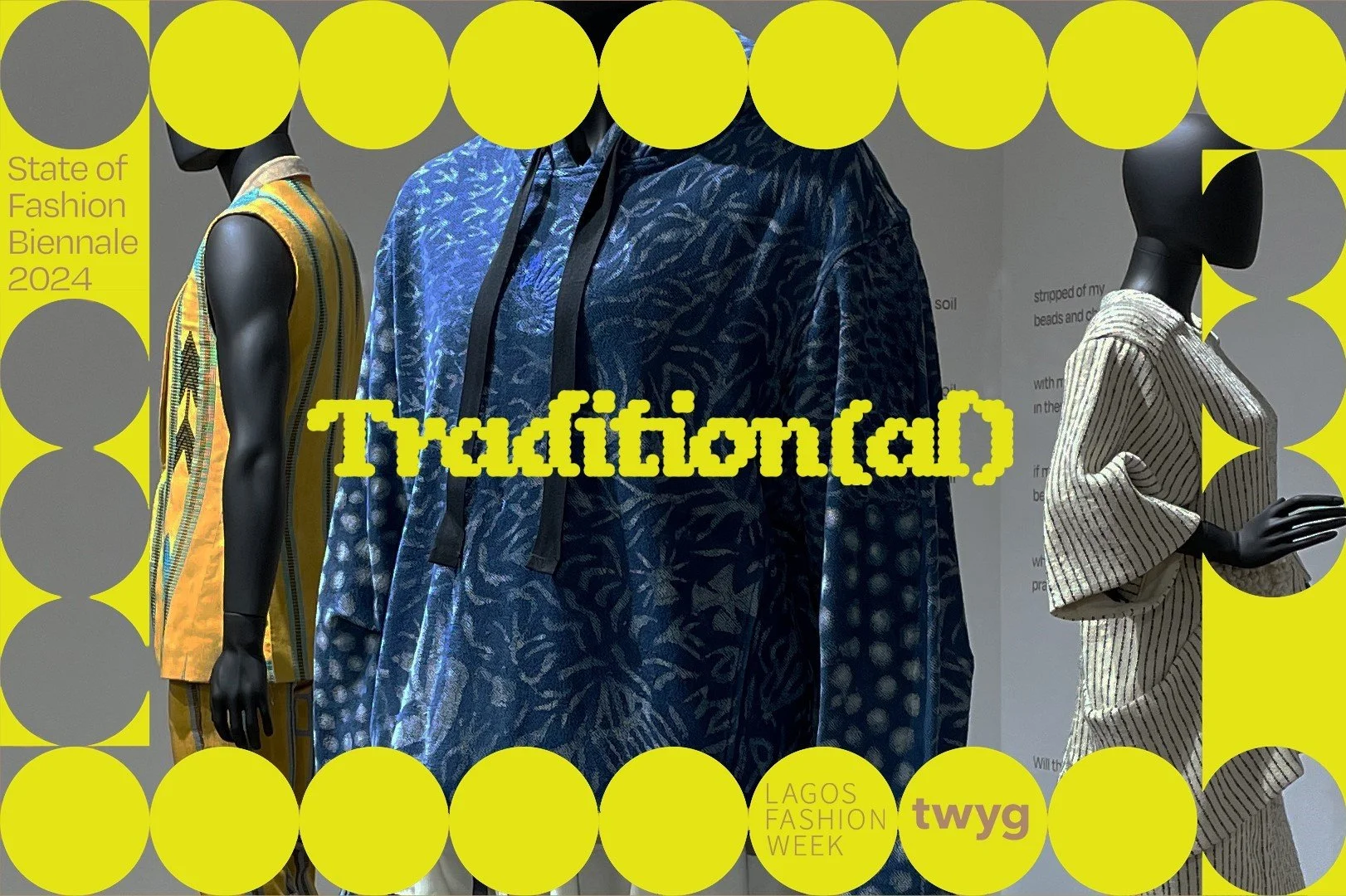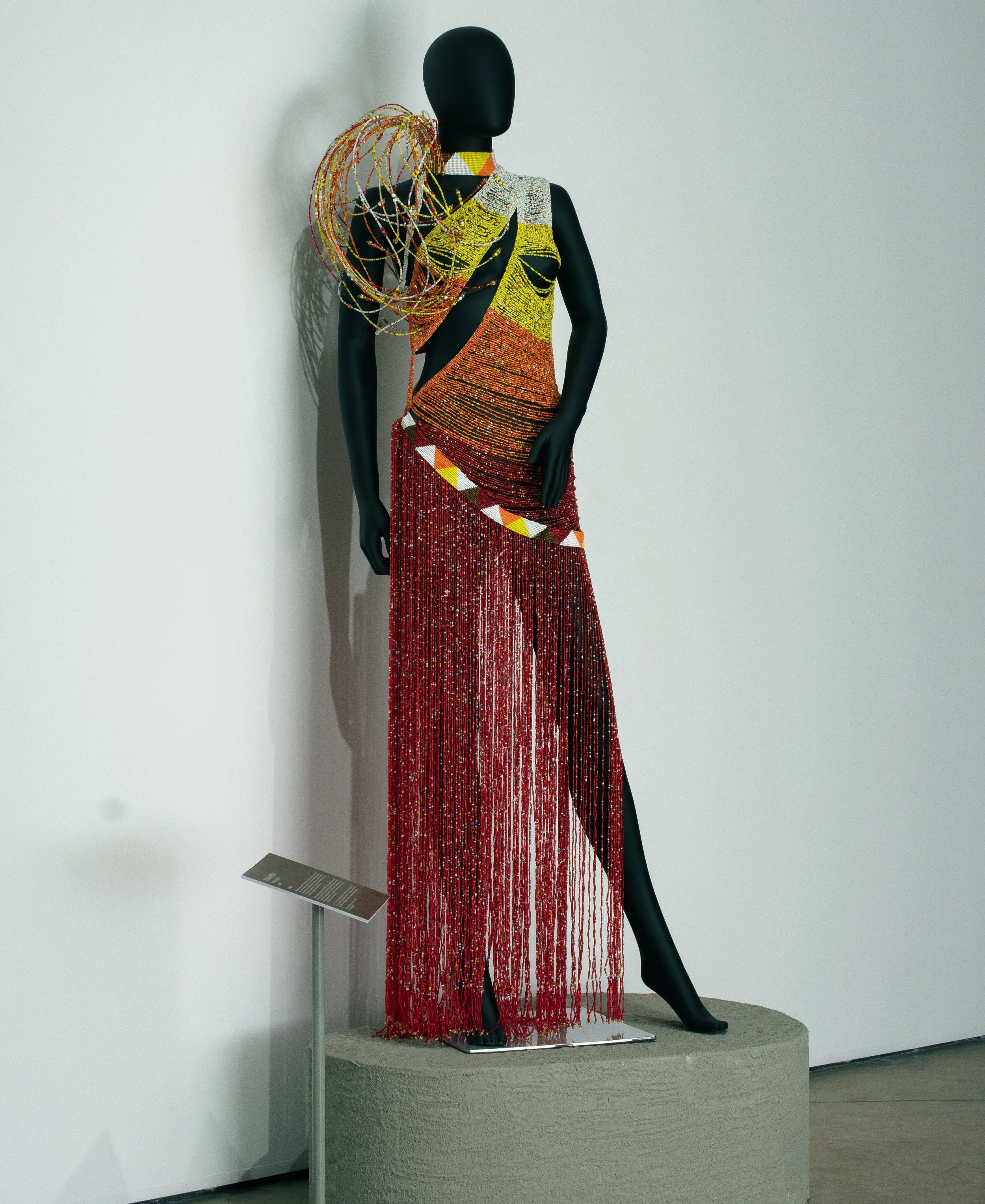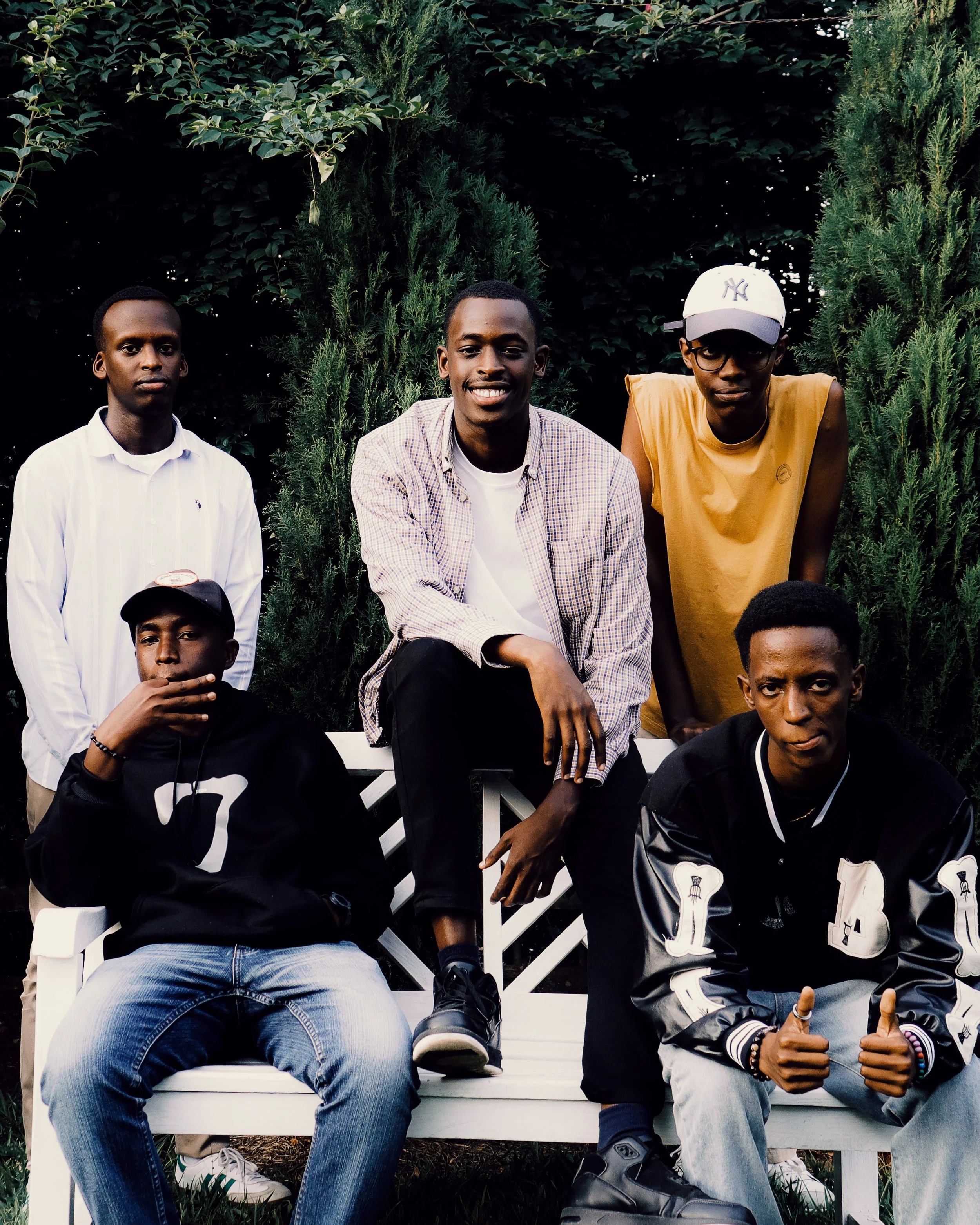Resurgence and Reclamation: Exploring Tradition(al)
State of Fashion is an international fashion Biennale, where alternatives to the current fashion system are given the center stage, reflecting critically on the fashion industry and its user.
The fourth edition of State of Fashion, under the theme “Ties that Bind”, brought together creative practices in fashion, textiles, and contemporary art from across the Global South. Curated by Louise Bennetts and Rachel Dedman in collaboration with Sunny Dolat, Kallol Datta, and Hanayrá Negreiros, this decentralized edition unfolds across Arnhem-Netherlands, Nairobi-Kenya, Bengaluru-India, and São Paulo-Brazil.
In Nairobi-Kenya, the State of Fashion Exhibition took place on the 4th to 14th March 2024 at Circle Art Gallery under the theme “Tradition(al)," curated by the talented, Sunny Dolat. The exhibition lay a profound reevaluation of what it means to honor and dismantle tradition in a pan-African scope, revealing enduring connections between past, present, and future. Here, traditional style is not a relic of bygone eras but a living, breathing force that informs contemporary design. The exhibition sought to promote traditional trends by challenging conventional notions of African identity, embracing a spectrum of aesthetic expressions that defy categorization, and inviting dialogue around the evolution of tradition in contemporary contexts.
European colonization left an indelible mark on Africa, not only through physical domination but also by eradicating cultural practices and cloth-making processes that had thrived for generations. However, some practices withstood this erasure, some of which were highlighted in the exhibition.
We started by looking at materials and material expression exemplified by the works of artist Johanna Bramble. Bramble, alongside Dickens Otieno and Hisi Studio, employs textiles as their primary medium. Her innovative use of materials like Abaca (banana fiber), Raphia fiber, and traditional cotton treatments, reflects an ancestral approach to cloth-making that transcends conventional boundaries. Additionally, Otieno's unconventional use of shredded aluminum cans woven together challenges preconceived notions of materiality and craftsmanship. In addition, the exhibition spotlighted a beaded dress by Patricia Mbela, crafted using the lost beading style of the Taita community in Kenya. This particular style of beadwork was decimated under British colonial rule in Kenya, as it was unjustly labeled as witchcraft, a tragic consequence of colonial prejudices.
Photo: Johanna Bramble - Cotton Textile
Patricia Mbela - Beaded Dress
Transitioning from the exploration of material expression, the exhibition invited visitors to delve into diverse interpretations of tradition manifested in silhouette, design, manipulation, and production. Take for instance the work of Nigerian designer Bubu Ogisi and Moshions from Rwanda. The Moshions piece titled Shana, from his Imandwa Zose collection, drew inspiration from the traditional Rwandan indigenous dress, Mushanana. Through a contemporary lens, Moshions reimagined the silhouette by incorporating suiting materials and blending traditional drapery with modern elements like lapels and sleeves. This innovative approach not only revitalizes traditional forms but also underscores the fluidity of aesthetic evolution. Similarly, Bubu’s patchwork suit made of bark cloth from her SS20 Collection, challenges us to look at materiality in different ways. Bark cloth is an indigenous Nigerian textile that has been used for centuries, however, its application within clothing is limited due to its size.
Photo: Bubu Ogisi
Photo: Moshions - Shana
Challenging conventional perceptions of African design, the "Tradition(al)" exhibition deliberately eschewed the typical designs associated with the continent's fashion aesthetics. One striking departure from this was the deliberate absence of Ankara, a popular African fabric known for its vibrant patterns and colors. By omitting Ankara from the exhibition, Sunny challenged the monolithic view of African fashion, which often reduces it to a singular aesthetic defined by bold hues and intricate prints. This intentional choice reflects a broader effort to dismantle narrow stereotypes and celebrate the diverse visual languages found across Africa's 54 independent states. Indeed, African design encompasses a rich tapestry of influences, ranging from maximalist to minimalist, brightly colored to subdued. By embracing this diversity, the exhibition invites viewers to reconsider their preconceived notions of African design and recognize its inherent complexity and nuance.
Beyond aesthetics, textiles and dress are intimately connected to people, society, and political realities by being made by hand and worn on the body. The recent ban on Kaunda suits and traditional African attire in Kenya's National Assembly’s debate chambers exemplifies the fraught intersection of clothing and power dynamics. This ban, proposed by the speaker of the National Assembly, reflects a broader narrative of cultural erasure and colonial influence in Kenya's political landscape. As a former settler colony, Kenya grapples with the legacy of colonialism, which sought to erase indigenous practices and identities in favor of Western ideals. The ban on traditional attire not only perpetuates colonial narratives of inferiority but also contradicts the government's purported commitment to preserving indigenous knowledge and practices. This contradiction is evident in initiatives like the Ushanga Initiative, which was also part of the exhibition. The initiative aims to consolidate beading communities and preserve indigenous beading cultures and practices. However, the government's simultaneous endorsement of Western dress standards while denigrating traditional attire highlights the pervasive influence of colonial ideologies in contemporary governance. Moreover, the ban on traditional attire reinforces harmful stereotypes and prejudices, particularly in the workplace, where individuals are often subjected to discriminatory dress codes based on Western norms.
Poem by Sunny Dolat
A lesser-explored aspect of African fashion is its historical embrace of non-binary designs and queer identities. Across various ethnic groups, ideas regarding gender were fluid and multifaceted, defying the Western notion of a binary system. An example of this is seen in the Dinka of Southern Sudan where men wear adorned beaded crosets. A practice that defies traditional Western gender norms, offering a powerful counter-narrative to the colonial imposition of binary gender constructs.
In the context of African fashion, decolonization is about more than just embracing traditional attire; it is about reclaiming the right to define our standards of beauty, expression, and identity. It is about celebrating the diversity of African cultures and rejecting the notion that Western norms are superior. It is a journey of self-discovery, empowerment, and celebration. A journey that we embark on together, as we weave the narratives of our past into the vibrant tapestry of our future.
And so as we wandered through the vibrant displays of "Tradition(al)," we were reminded that the “Ties that Bind” us were not just threads of fabric, they were the stories, histories, and ambitions.











